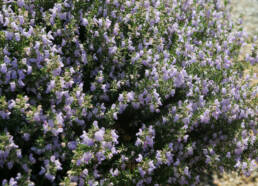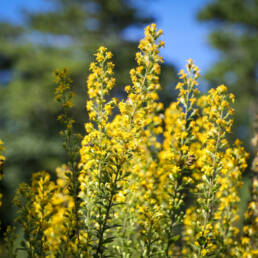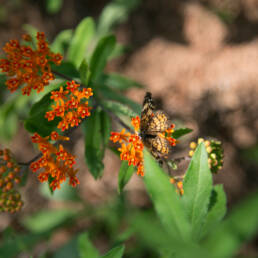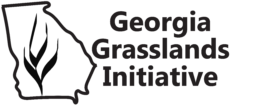The Georgia Pollinator Plants of the Year Program recognizes four plants each year that support pollinators, perform well in a garden, and are beneficial for insects. These plants are nominated by gardeners throughout Georgia and are vetted by experts on a selection committee based on each plant’s horticultural value, ease of propagation, and ecological significance.
These plants also represent each of the growing seasons: spring, summer, and fall. This categorization helps to provide nectar, pollen, and other resources that are beneficial for insects, such as Monarchs and Southeastern Blueberry Bees, throughout the duration of each growing season.
In Georgia, these plants are now available to trade. Heather Alley, an employee of the State Botanical Garden of Georgia, shared seeds and cuttings of these plants with growers for free to help them get their own inventory started. This small task helped to increase the number of native plants that are available to plant in gardens, and contributed to the conservation of birds, bees, and butterflies. In addition, by purchasing these plants from Georgia Growers, you are supporting jobs in the green industry
Visit the State Botanical Garden of Georgia website to learn more about the program and to nominate your favorite pollinator plant; contact Heather Alley about seed sourcing; and learn about participating retailers who are increasing the availability of pollinator plants. You can also learn more about the Georgia Pollinator Plants of the Year Program from the University of Georgia Cooperative Extension here.
Conradina (Conradina canescens)

Plant Details
Conradina is a Spring-blooming 1-2’ evergreen woody shrub in the mint family with aromatic, needle-like leaves. In spring, this plant is covered in small lavender flowers with purple spotted throats.
Conservation Value
Supports many native bees and other pollinators.
Sweet Pepperbrush (Clethra alnifolia)

Plant Details
Sweet Pepperbush is a Summer-blooming small, deciduous and densely branched shrub. Panicles of white flowers give way to persistent seed heads in the fall.
Conservation Value
Supports many native bees and other pollinators. Birds and other animals feed on the seeds in fall and winter.
Downy Goldenrod (Solidago petiolaris)

Plant Details
This Fall-blooming plant is one of the shorter goldenrods standing at 1-3’ tall. In August to October the flowers bloom in dense, spike-like clusters creating a yellow plume.
Conservation Value
An excellent plant for supporting pollinators: bees, wasps and at least 112 species of butterflies and moths.
Butterfly Weed (Asclepias tuberosa)

Plant Details
Butterfly Weed is a Summer-blooming herbaceous perennial wildflower that reaches 1-2’ tall. This plant has highly branched stems with lance-shaped leaves.
Conservation Value
Larval host plant for Monarch Butterfly and Milkweed Tussock Moth and a nectar source for bees, butterflies and hummingbirds.

